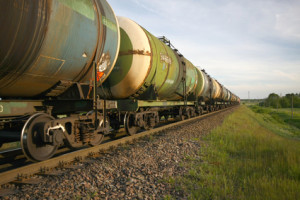Oil Storage and Transportation: Minimizing The Risks
 Oil Storage and Transportation: Minimizing The Risks
Oil Storage and Transportation: Minimizing The Risks
Crude oil can be dangerous and capable of doing a great deal of damage in a short amount of time. Preventing serious accidents and hazardous situations should always be a priority. Good design, regular maintenance, and proper training all come together to create safe, reliable transportation and industrial storage solutions.
Safer by Design
In designing industrial storage solutions, you are well served by remembering the basics. In order to burn, fire requires three things: heat, a combustible material, and oxygen. Oxygen is readily available in the air, and the oil itself, along with the fumes it gives off, is a combustible material. This combination makes pumping stations a prime candidate for an incident.
Pumping stations should be kept as cool as possible and pumping should only occur when truck engines are turned off. Smoking and anything that involves combustion must be prohibited from the area. Pumping stations must also be well ventilated so escaping gasses do not have a chance to build up.
Storage tanks must be properly grounded to avoid any electrical sparks, and they should be equipped with gas detection systems so operators can be alerted to dangerous situations. It should go without saying that all storage units should be built according to code.
Maintaining Safe Conditions
Degradation of storage and pumping units can lead to dangerous conditions and preventable incidents. Therefore, storage facilities require a stringent routine of inspection and maintenance. Trained inspectors should check for gas leaks on a daily basis, and all workers must be required to wear rubber-soled shoes. Smoking, cell phones, and anything else that could cause a spark must be prohibited from the area.
Maintenance tasks should never be completed with battery operated tools, as they are more likely to spark than hard-wired tools. In addition, all tools and extension cords should be in good repair as both are potential sources of sparks that could result in fire.
Training for Prevention
Industrial storage solutions are inherently dangerous. There is no safety procedure or any piece of safety equipment that is going to be effective without proper training. The education begins with the storage facilities:
- Operation supervisors must know the purpose of each storage unit, and must use each tool and device correctly.
- Inspectors must perform thorough inspections rather than simply report gas accumulation figures.
- Inspectors should understand the proper use of each storage tank, where it can fail, what the first signs of failure are, and how to stop any degradation before it reaches the point of failure.
Training should be an ongoing activity, not a one-time event. Safety procedures should be reviewed with all employees on a regular basis, and all training materials should be frequently updated. Emergency procedures should be practiced and memorized by all workers so there is never any confusion or delay when incidents do occur.


One of the most important things, in any field to be honest, is training for prevention instead of repair. I think the tips you give under training for prevention are all really good things, especially for supervisors who can learn these things faster and pass them down the line. Inspectors should definitely know the contents of everything ahead of time and know how to deal with different situations. Thanks for the post.